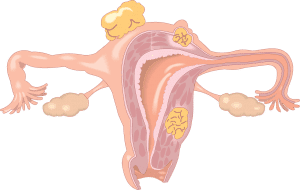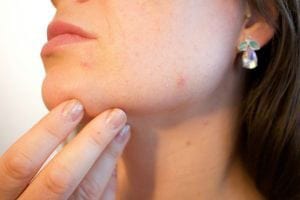Severe Acne
What is severe acne?
Acne is a nearly universal skin condition affecting men and women of all ethnicities—chances are if you were ever a teenager, you had acne. Most acne cases resolve by the age of 30, though it’s not uncommon for people in their 40s and 50s to have acne outbreaks. Most acne cases involve outbreaks of small lesions, colloquially known as pimples or zits. People with severe or cystic acne, though, develop painful cysts and nodules that cover large patches of skin. While there are different definitions of what constitutes a severe acne outbreak, there are four broad types of severe acne:
- Nodulocystic acne, distinguished by inflamed cysts filled with pus or other fluids
- Acne conglobate, a severe type of nodulocystic acne distinguished by groups of large, painful cysts that connect beneath the skin
- Acne fulminans, a sudden and severe inflammation caused by a rise in male hormones that impacts the entire body (typically seen in adolescent males)
- Gram-negative folliculitis, which is an inflammation of skin follicles caused by a bacterial infection
Left untreated, these severe acne outbreaks can cause permanent scarring and significant emotional distress. Fortunately, dermatologists can help manage most cases.
What causes severe acne?
The causes of severe acne have a lot to do with hormones—specifically, a male sex hormone called “androgens” found in both boys and girls. Androgen production increases during puberty, which in turn boosts the output of oil glands on skin and hair follicles. The increased oil clogs pores and creates the conditions for acne outbreaks. The severity of these outbreaks vary depending on a variety of factors, including:
- Genetics and family history
- The use of certain medications
- The use of greasy or oily cosmetics and skin products
- Hormone levels in adolescent girls in the days leading up to their menstrual period
- Pressure on the skin caused by sports equipment, backpacks, or clothing
- Environmental pollution and humidity
- Stress
How is severe acne diagnosed?
A dermatologist can make a severe acne diagnosis and recommend a course of treatment. To make a diagnosis, the dermatologist will examine the skin to determine if an outbreak is actually acne or another skin condition. Based on the examination, the dermatologist will grade the acne from 1 (mild) to 4 (severe) and make treatment recommendations based on the grade, type, and location of the outbreak.
What treatments are available for severe acne?
While there are several over-the-counter medications available for mild to moderate acne, severe acne treatment requires stronger prescription medications. Depending on the type of severe acne and the extent of the cysts and nodules, dermatologists may recommend either a topical (spread on the skin) or oral treatment, or a combination of the two.
Some of the major prescription topical medications are:
- Antibiotics to stop or slow bacteria growth and reduce inflammation
- Retinoids to unplug clogged hair follicles called comedone, which in turn helps topical medicines enter the follicles; retinoids are derived from vitamin A
Topical treatments are available in different forms, such as a cream, lotion, or gel. These allow for greater flexibility for people with sensitive skin or who need varying degrees of moisture.
Prescription oral antibiotics are designed to slow bacteria growth or reduce inflammation. Some common prescription oral treatments are:
- Tetracycline
- Minocycline
- Doxycycline
Less commonly used oral medicines include:
- Clindamycin
- Erythromycin
- Sulfonamides
In addition, women with severe acne might benefit from taking birth control to regulate their hormones.
In severe cases of nodulocystic acne, dermatologists might also consider corticosteroid injections directly into the cysts or surgery to drain and remove the cysts.
Where can I find more information about severe acne?
Severe Acne Articles








